 Approved by Dr. Dwight Alleyne, DVM
Approved by Dr. Dwight Alleyne, DVM 6 Causes Of Dog Eye Discharge & How To Handle Them
Much like us, our buddies are also vulnerable to watery eyes, discharge, and even eye boogers for different reasons. But are these a cause for concern or mostly harmless? Here's everything you need to know about eye discharge in dogs - and when to head to a vet.
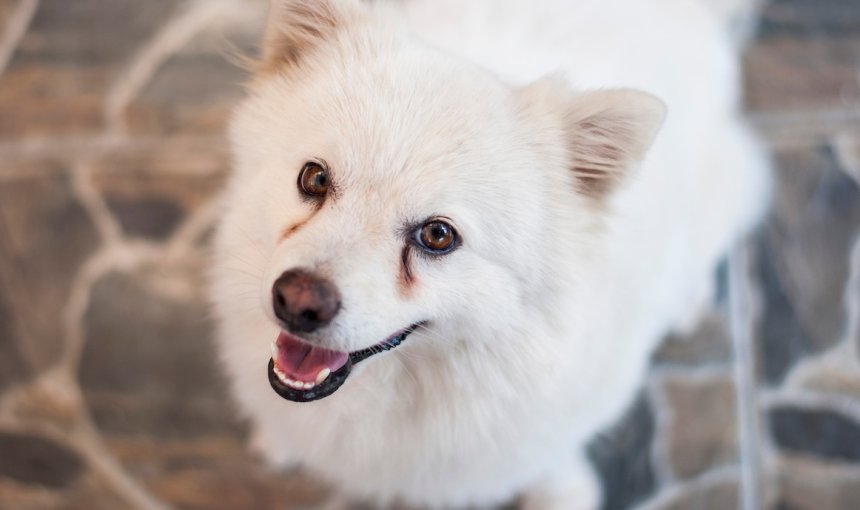
As spring approaches, you might’ve found yourself with a runny nose or watery eyes as that pesky pollen or dander fills the air. But much like us, our buddies can end up with a bad case of watery eyes too! But is this kind of dog eye discharge an eye infection or something relatively harmless and temporary?
So let’s dive right into what can cause eye discharge in dogs, what an eye infection in dogs looks like – and how tracking if your dog’s wandering into any pollen-riddled areas can help you prevent one in the first place.
- Is dog eye discharge always a cause for concern?
- The main causes of eye discharge in dogs
- E ye discharge in puppies
- What to expect at your vet
- Treating eye infections in dogs
- How to prevent eye discharge in dogs : Steps you can take
- Wrapping up: What’s causing my dog’s eye discharge?
- Dr. Dwight Alleyne, DVM
Is dog eye discharge always a cause for concern?
Dealing with a dog eye infection is no joke – but on the bright side, if you’re noticing your dog’s eyes watering more than usual, it’s not always a cause for concern.
In fact, tears help clean out our eyes, keep them healthy, and prevent them from getting too dry. But sometimes, they might not drain out from your dog’s eyes 100% – so they might accumulate in the corners of their eyes.
Why does my dog have eye boogers all of a sudden?
If you’re noticing a type of dog eye discharge that just looks a bit like a booger or just a bit…well, goopy – it’s usually pretty normal. In fact, dog eye boogers (much like ours) form because their eyes’ tears accumulate rather than getting drained out through their eye ducts.
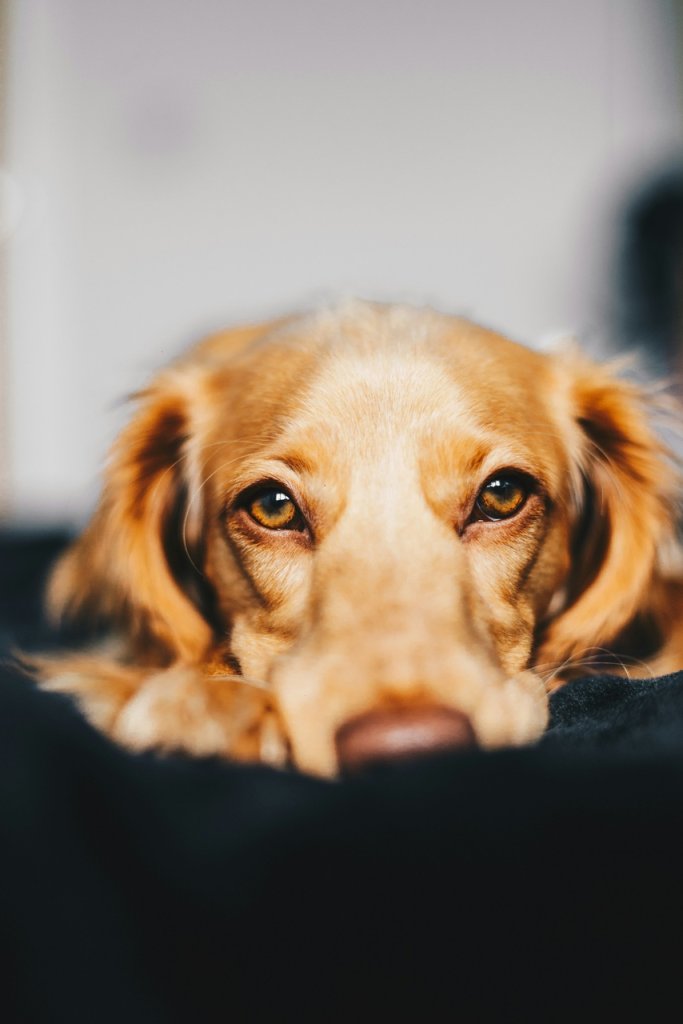
Plus, this kind of “crusty” material is made up of dried tears, oil, dead cells, and mucus. Which is why it might look slightly reddish-brown in some cases.
You might notice dog eye boogers most commonly in the morning – or after your dog takes a long nap.
⚠️ But while it’s quite normal, watch out for other warning signs, including:
- Red eyes
- Other signs of discomfort, like squinting, or light sensitivity
- Excessive rubbing or pawing at their face
- Other kinds of eye discharge, including white-grey, yellow, or even green mucus
In these cases, you might be dealing with a proper case of dog eye infection. So make sure to drop by your vet immediately.
The main causes of eye discharge in dogs
Now if your dog just seems to be dealing with a bad case of watery eyes – but doesn’t otherwise seem too distressed – it might be wise to give the situation a day or two before heading to your vet. But otherwise, here are the main culprits behind dog eye discharge:
There’s something in your dog’s eyes
You know how our eyes tend to get watery and irritated when there’s pollen or dust in the air? That’s one of the main causes of eye discharge in dogs too – i.e., when there’s something irritating their cornea directly in their eyes.
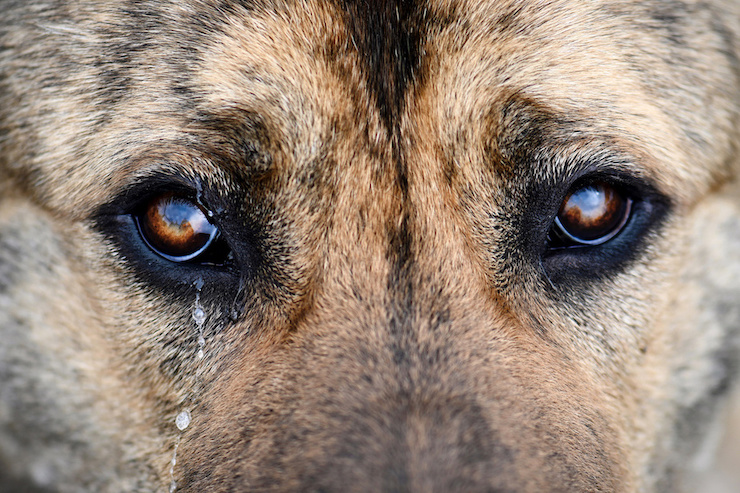
This causes your dog’s eyes to increase production of tear fluid – so these tears can flush out any foreign bodies. (It’s a completely natural process that occurs even for us humans.) With dogs, you might find this occurring more often on one side.
Now while this might be normal, it might be worth taking a closer look if you’re noticing excessive eye discharge or tearing.
For example, your dog’s eyes might be irritated from a rolled eyelid, since their eyelashes are rubbing directly against the eyeball. (Ouch!)
Your dog’s eye ducts are blocked
Another reason for dog eye discharge is if their nasolacrimal canals are blocked. (That’s a fancy term for their nose and eye ducts.)
Because of this blockage, your dog’s tears don’t drain properly – and lead to excessive tearing and discharge.
- You can use a topical saline solution to wipe away your dog’s tears in the morning and evening to prevent traces or staining.
- Make sure to drop by your vet if you notice any excessive or foul-smelling eye discharge.
Your dog’s allergic to something in your environment
Another cause of dog eye infection are the dust, mites, pollen, dander, and other allergens in your environment. Dogs also tend to be quite sensitive to common household products, including cleaning fluids or even garden items like snail bait. (Which can be toxic if they bite or lick it!)
These objects might irritate your dog’s eyes – leading to increased eye discharge and tearing.
In these cases, you’ll find it smart to:
- Figure out the source of your dog’s allergies
- Remove them as best as you can from your environment
Read more:
- Toxic To Dogs: Dog Parents Beware Of These Common Dog Poisons
- The Danger Of Snail Bait For Dogs
- Dog Pollen Allergy: Dealing With The Springtime Sniffles
- Tick Control for Dogs: How to Prevent and Remove Tick Bites on Dogs
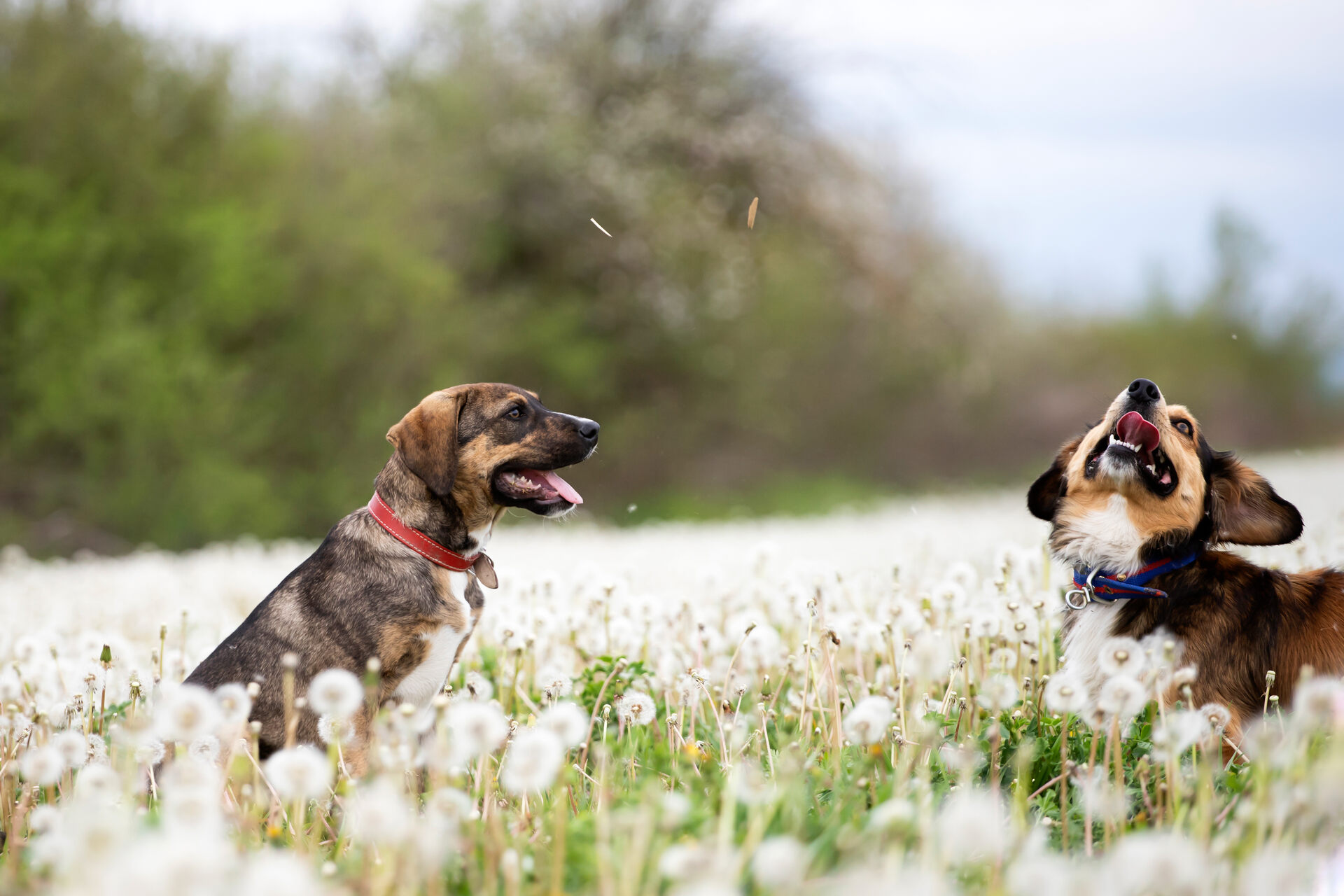
But most importantly…
- Figure out if your dog has been wandering somewhere containing these allergens
Because if your dog likes to spend time outdoors or you’re both headed out on walks, hikes, or runs together – there’s always the chance they might come into contact with something potentially infectious. (Whether that’s from other animals – or that open patch of woodland full of pollen you both enjoy walking through.)
💡So imagine the relief and peace of mind from knowing your dog’s safety is just a glance at your phone away?
It’s why dog parents around the world – just like you – are investing in dog GPS trackers. To monitor their buddies’ movements in real-time and prevent them from wandering somewhere unsafe.
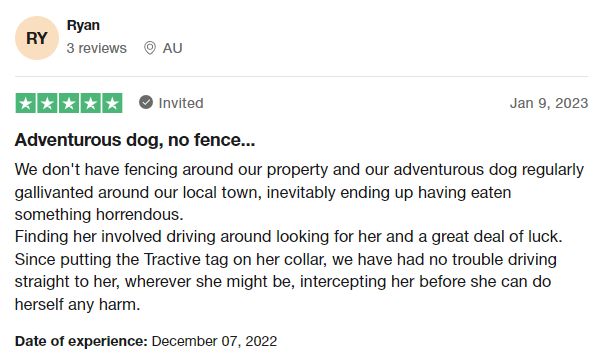
Your dog’s genes are responsible
Some dogs are prone to watery eyes as a result of their genes, including certain congenital abnormalities.
- If your dog’s eyes water brown, this may indicate an accumulation of tear fluid, which is normal in some dog breeds.
- Over time, the tear fluid can cause discoloration – known as tear staining. While this can be uncomfortable, it’s usually not a cause for concern.
Unfortunately, you can’t really prevent any eye discharge in dogs genetically predisposed towards them. Some breeds are more prone to it than others – especially brachycephalic dog breeds, like Bulldogs, Shih Tzus, Pekingese, Boxers, and others.)
But with a little care and monitoring, you can help keep your dog’s eyes healthy – including regular check-ins with your vet.
Your dog’s eye has gotten injured
Eye discharge in dogs can also result from injuries – like if a foreign body or liquid gets in their eyes. (Or if they’ve gotten into a fight with another pet or predator.) This can cause irritation and inflammation if left untreated.
In these cases, make sure to head to your vet if you notice your dog excessively rubbing at their eyes or pawing at their faces.
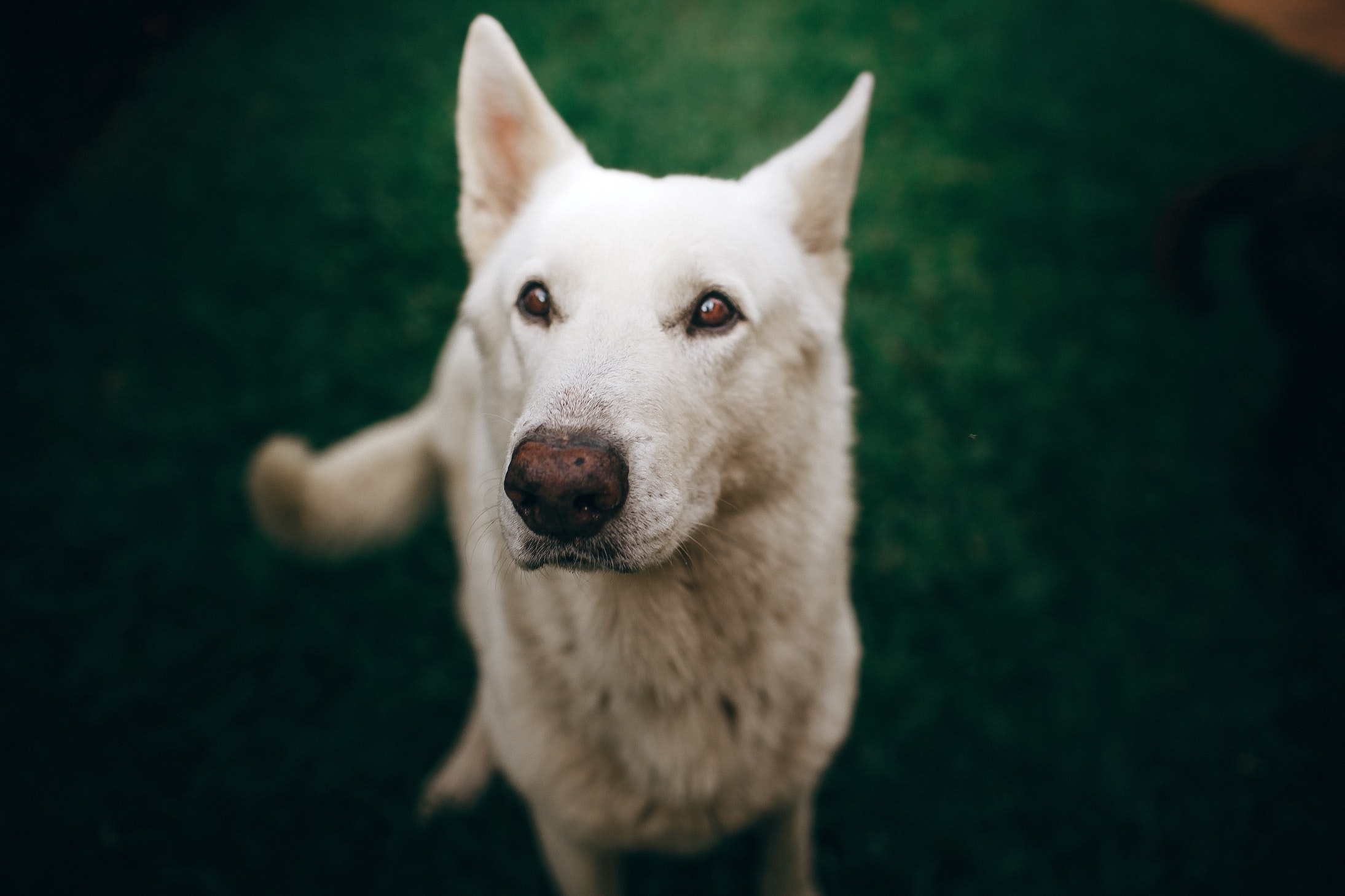
💡Your dog might end up in a tussle or two with other dogs or animals – especially if they’ve sniffed out a female in heat nearby, or have a high prey drive. (Which might result in an injury or two.)
So you could escape-proof your home and backyard by setting up a “safe zone” on your trusty Tractive device – which sends you an instant escape alert the minute your dog tries sneaking past it.
Read more:
Your dog’s dealing with a medical condition affecting their eyes
Much like humans, dogs can and do end up dealing with eye infections that can cause them discomfort and pain. Some of these diseases are congenital – while others may develop over your dog’s life.
Here are some examples of medical conditions that affect your dog’s eyes:
- Cataracts, or the clouding of the lens of your dog’s eyes. These can be partial or complete – but both affect your dog’s vision. Cataracts may be congenital or age-related, but may also develop from health conditions like diabetes.
- Progressive Retinal Atrophy (PRA), which is a genetic condition where the photoreceptors of your dog’s eyes gradually disintegrate. Sadly, this leads to gradual blindness with time. Some dog breeds might be more susceptible to PRA than others.
- Corneal ulcers, or a wound to the cornea of your dog’s eye. This can be caused by an injury, infection, or due to other eye diseases. Watch out for signs like redness and increased blinking.
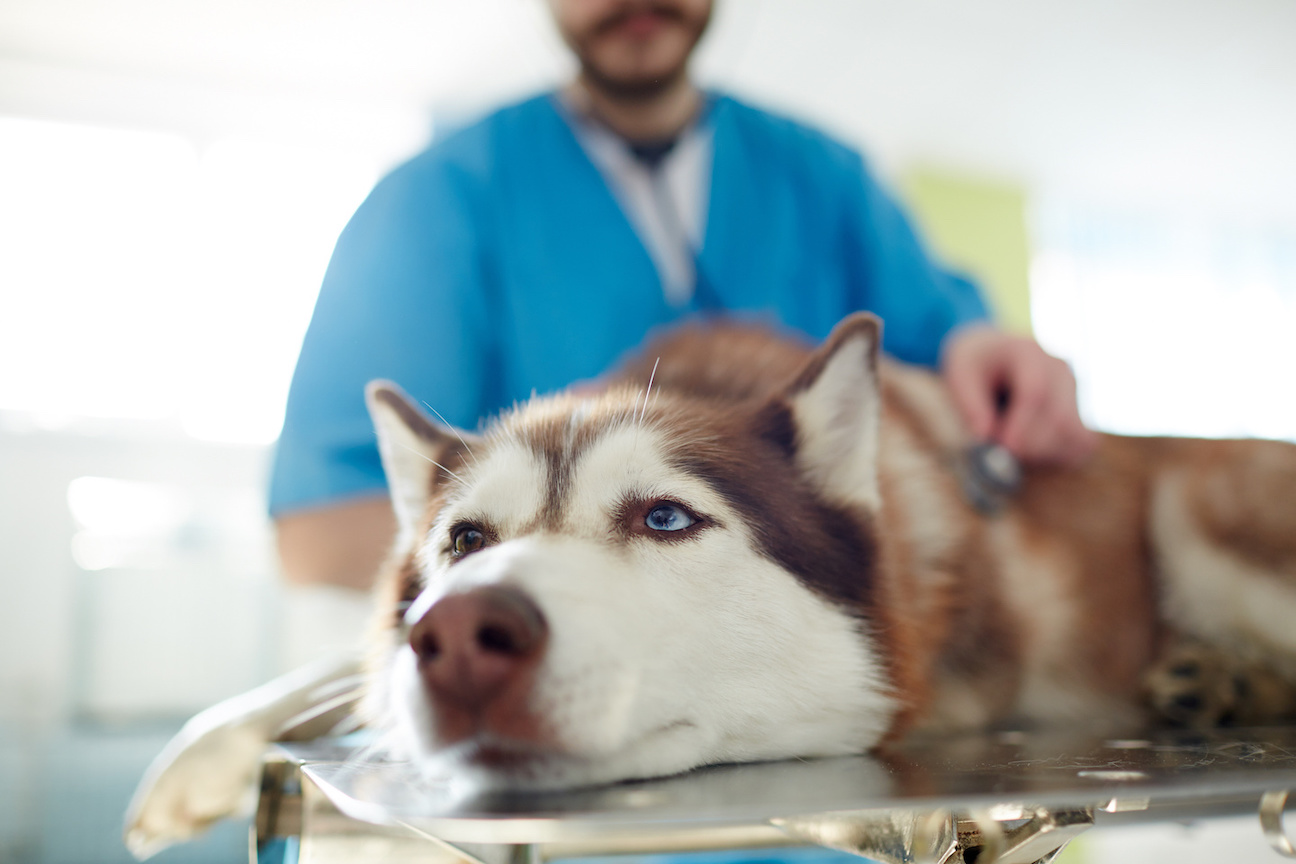
- Conjunctivitis in dogs, which is one of the more common medical conditions. It may be caused by exposure to harmful chemicals, allergens, or infections. Watch out for redness along with excessive eye discharge.
- Dry eyes, which is a condition in which your dog’s eyes don’t produce enough tears. This can lead to dryness, irritation, and infection. Dry eyes may occur as a result of certain types of medication, genetic factors, or after conjunctivitis.
- Glaucoma, which results from increased intra-ocular pressure. With time, glaucoma can damage your dog’s optic nerves and retina – causing blindness. Symptoms include pain, redness, and increased blinking.
Eye discharge in puppies
Eye discharge in puppies can be normal, especially when they first starting teething – which actually puts some pressure on their tear glands! This leads to increased tear production and watery eyes as a result.

Besides, knowing what little balls of energy puppies tend to be, it’s not uncommon for them to get something in their eyes while playing outside – or getting watery from the wind.
Just make sure to keep an eye out for other signs of discomfort – like redness, swelling, or foul-smelling discharge. Puppies are quite vulnerable to infections before their vaccinations, so make sure to get them their shots as soon as they’re old enough.
What to expect at your vet
If you’ve gotten your buddy over for a checkup, your vet might begin by thoroughly examining your dog’s eyes – looking for signs of inflammation, injury, or foreign bodies. One of these routine tests is staining your dog’s eyes to determine if there are ulcers present.
They might also include a slit lamp examination and ophthalmoscopy to assess the cornea, lens and retina at the back of the eye.
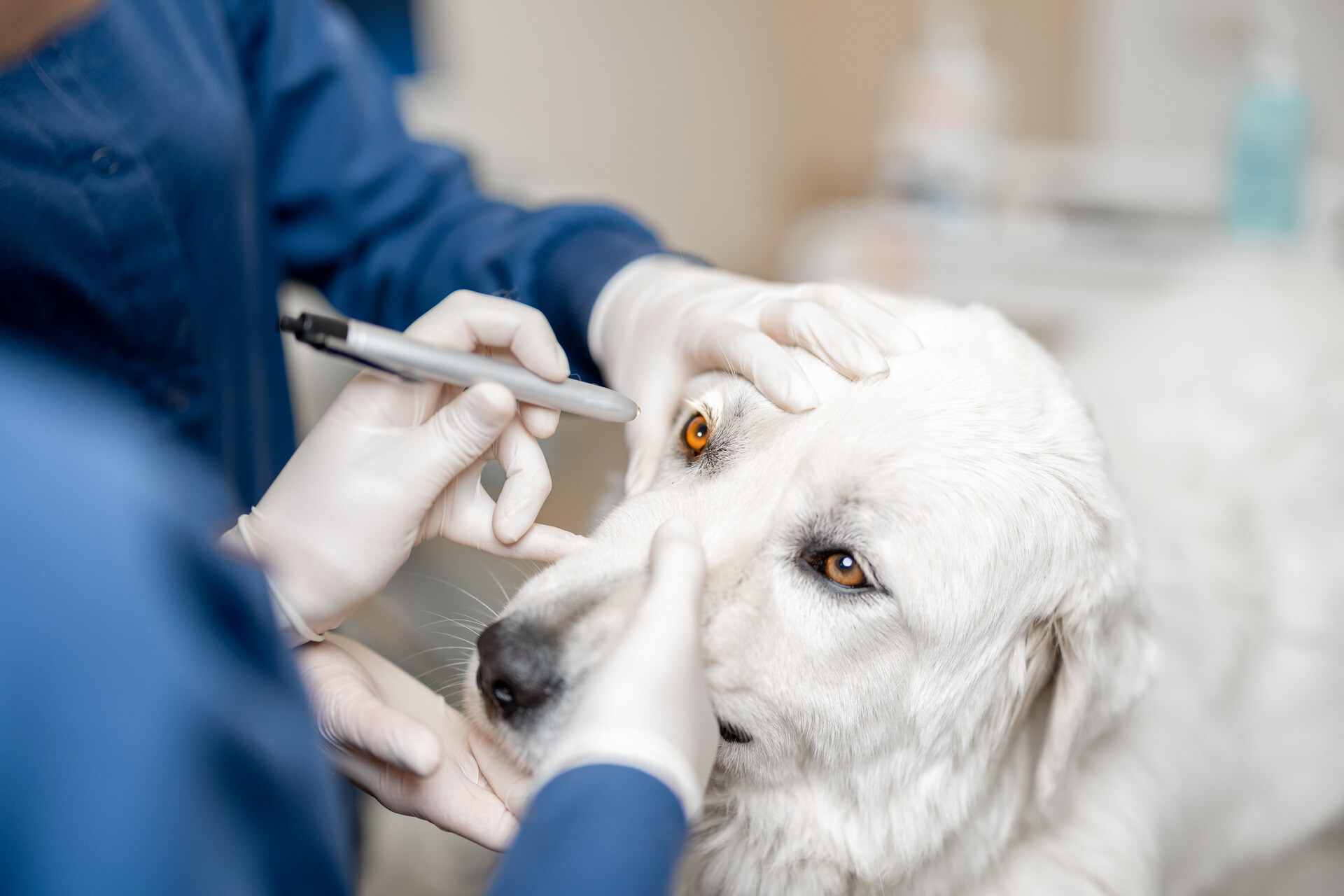
Lab tests
In some cases, your vet might need to conduct a laboratory test to accurately diagnose the cause of your dog’s eye discharge or infection. So they might:
- Take a swab or sample from your dog’s eyes to check for bacterial or viral infections
- Test this sample to determine the cause
- Conduct an allergy test to figure out what’s causing the discharge in the first place
Imaging
If your dog’s case is especially serious, your vet might need to take an X-ray, ultrasound, or even a magnetic resonance imaging (MRI) scan. This can help them determine if there’s an underlying anatomical abnormality causing the eye discharge.
Treating eye infections in dogs
Treating dog eye discharge depends largely on what’s causing it in the first place. So depending on this, plus how serious it is, your vet might prescribe you:
Medical treatments
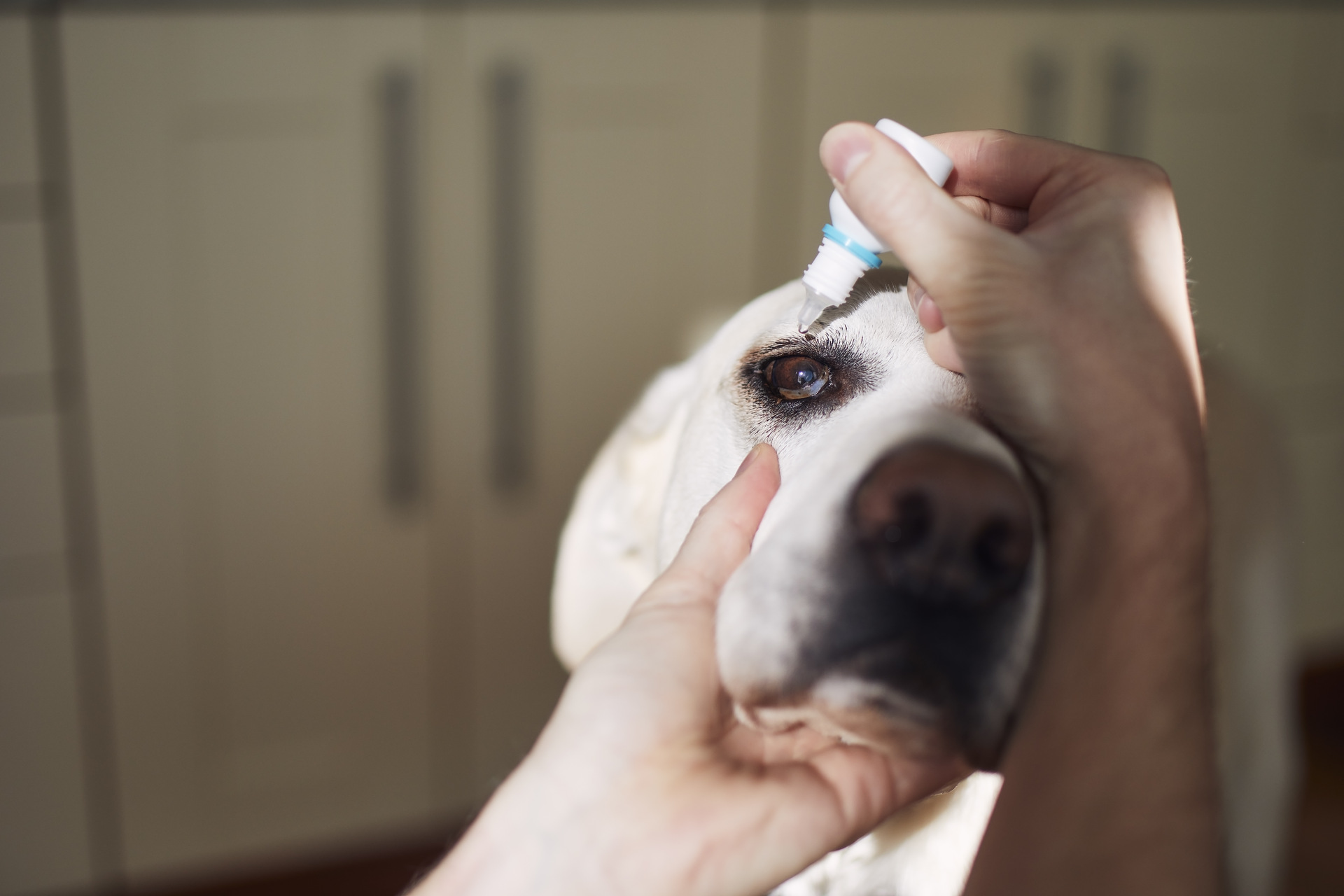
- If your vet finds that it’s an infection causing the discharge, they might prescribe you an antibiotic ointment to fight it and bring them some relief.
- Similarly, if it turns out to be a case of conjunctivitis, your vet might prescribe you anti-inflammatory eye drops or eye ointment.
- Anti-allergy medication can help in case your dog is sensitive to environmental allergens like pollen.
- Eye drops for dogs are another option for treating these conditions or very dry eyes. There are both over-the-counter and prescription options.
⚠️ At the same time, make sure to avoid giving your dog any medication built for humans! These can be fatally toxic to dogs and cause serious damage to their organs.
Rather, always consult your vet to ensure you’re giving your dog a medical solution that’s actually built for them.
Surgical treatments
In some cases, dog eye discharge may occur as a result of anatomical problems or eye diseases that can’t be treated with medication. (Like, for example, eyelid malformations or tumors.)
Which means your vet might recommend surgical treatment instead. Make sure to thoroughly discuss the best course of action with them before taking any decision.
Because in many cases, a successful surgery can help correct the problem and vastly improve your buddy’s health, happiness, and quality of life.
How to prevent eye discharge in dogs: Steps you can take
Now it might just turn out that your dog’s eye discharge might not be due to any serious problems. But it might still be causing your buddy pain – which can be difficult to live with, both for you and for them.
So here are a couple of steps you can take to handle any eye discharge at home – and how you can prevent it in the first place.
Give your surroundings a good cleanup
Pollutants and allergens in your environment can cause excessive tearing and discharge – including cigarette smoke, pollen, or even certain cleaning products.
So once you’ve deep cleaned your environment, you might actually find your dog’s symptoms getting better – especially if they’re the result of an allergic reaction.

Give your dog’s eyes a cleanup every so often
You might be brushing and grooming your dog on the regular – but their eyes need a little love too. So make sure you clean and check their eyes to catch on to any problems early on. (Especially for foreign bodies that can cause irritation.)
It’s also a good idea to keep your dog’s coat well-groomed around the eyes. Any hair that enters their eyes might cause irritation and tearing.
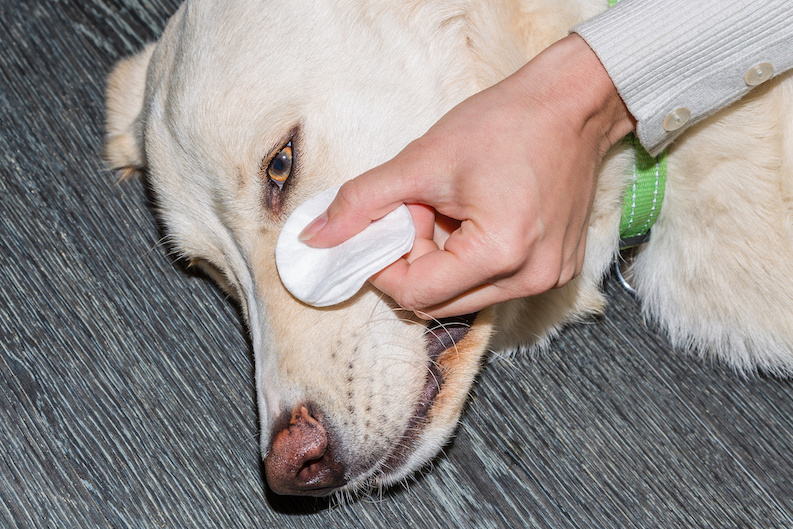
Use a clean, damp cloth or special wet wipes for dogs to remove excess dirt and tears. Be very careful not to hurt your dog or irritate their eyes even more.
Also make sure to use a vet-approved eye care product – any products built for humans might just worsen the problem for your dog instead!
If you notice a foreign object trapped under your dog’s eyelid (like a hair or a grain of sand), gently pull their eyelids apart slightly to get a good look. And if your dog’s comfortable with it, use a cotton bud to remove it.
⚠️ Be extra careful here – the risk of injury is always present and it might be difficult to remove any foreign object by yourself. Make sure to head over to your vet and leave the job to the pros, if so.
Double check your dog’s meals
Your dog’s diet can also have an impact on the health of his eyes. Make sure you offer them high-quality food that contains all the necessary nutrients.
You can also consider supplements specifically designed for eye health. Just make sure to discuss your options with your vet before trying anything new.
Some dogs may also be allergic to certain ingredients in their food, which can lead to eye discharge. Look out for possible allergy triggers in your dog’s food and consider changing their diet.
Track where your dog’s off wandering
Your dog’s everyday adventures might lead them to some…well, interesting places. (Especially if they’re an active dog that likes their unsupervised outdoor time.)
Which might include:
- The local dog park, where they might pick up an infection from another dog
- A dandelion-infested patch of woodland near your property
- Your neighbors’ pesticide-riddled backyards
…and other places they might pick up something infectious, eat something off-limits, or come into contact with toxic substances. (Whether you’re with them or not.)
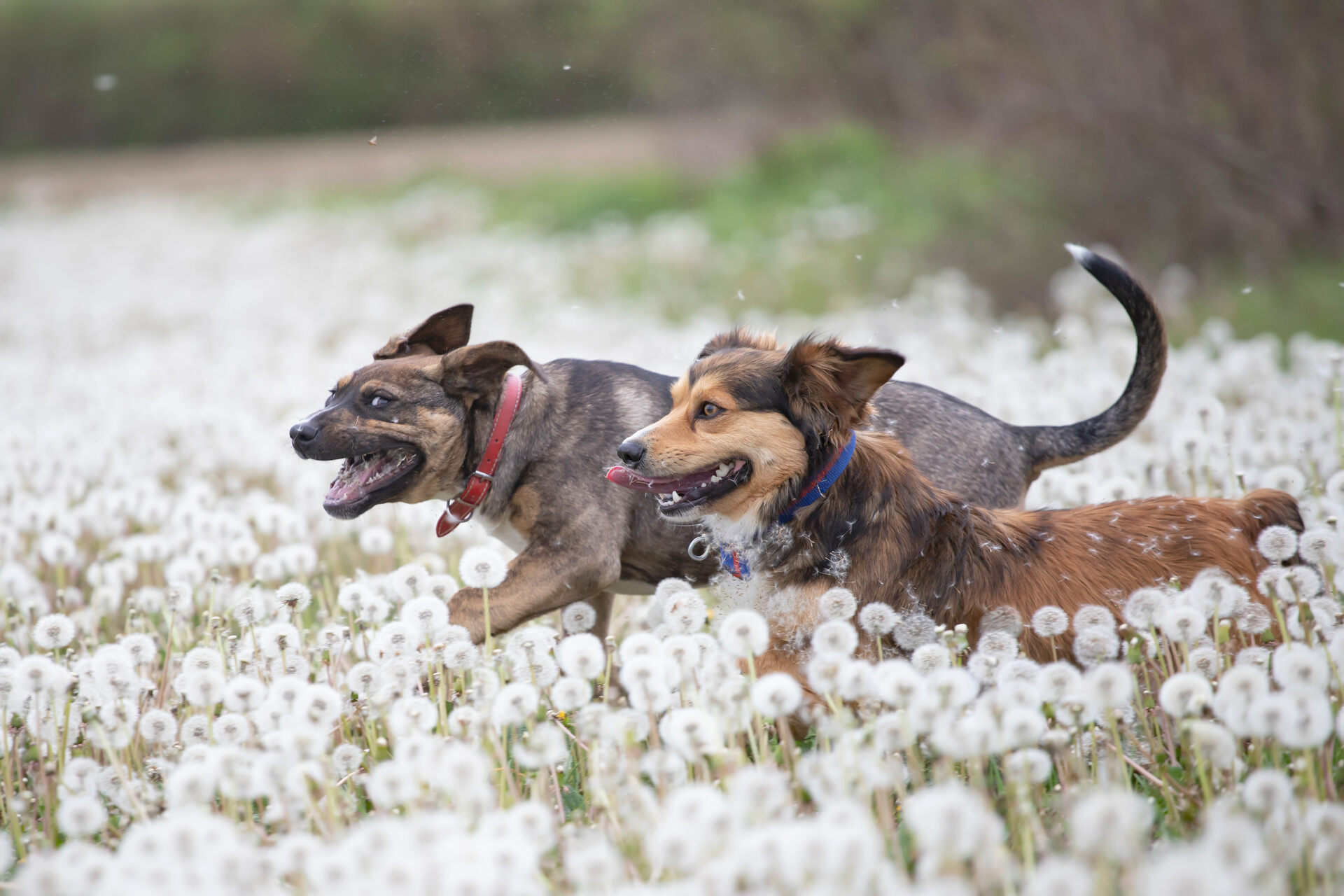
💡 So imagine knowing everywhere your dog goes – without having to monitor them 24/7?
With just a glance at your phone, your trusty Tractive GPS helps you track down your dog in real-time – no matter how far they’ve wandered off.
Or from your dog’s Heat Map & Location History, you can figure out:
- Their favorite hangout spots (and whether those are near allergy-prone areas)
- Which areas around your house or outdoors they spend most of their time in (and whether they’re likely to come in contact with other pets, animals, or toxic substances)
- Which parts of your fence need patching

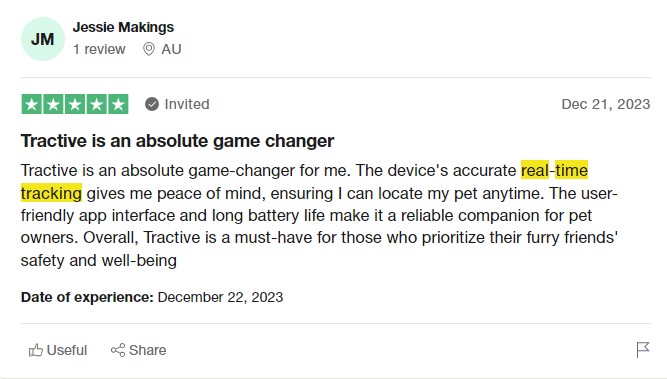
Wrapping up: What’s causing my dog’s eye discharge?
If you’ve got a dog that’s prone to eye discharge or dry eyes, it may be due to:
- A foreign object, like dust, pollen, smoke, or even mites in your environment
- A nasal-ocular blockage that prevents your dog’s tears from draining normally
- An allergic reaction to something in your environment
- An infection, whether from viruses, bacteria, or even fungi in your environment
- A medical condition affecting your dog’s eyes, including conjunctivitis, cataracts, or even glaucoma
In other cases, your dog’s genes might also play a role. Brachycephalic dog breeds (like Pugs, Bulldogs, and Mastiffs) might be more vulnerable to dry eyes and excessive tearing.
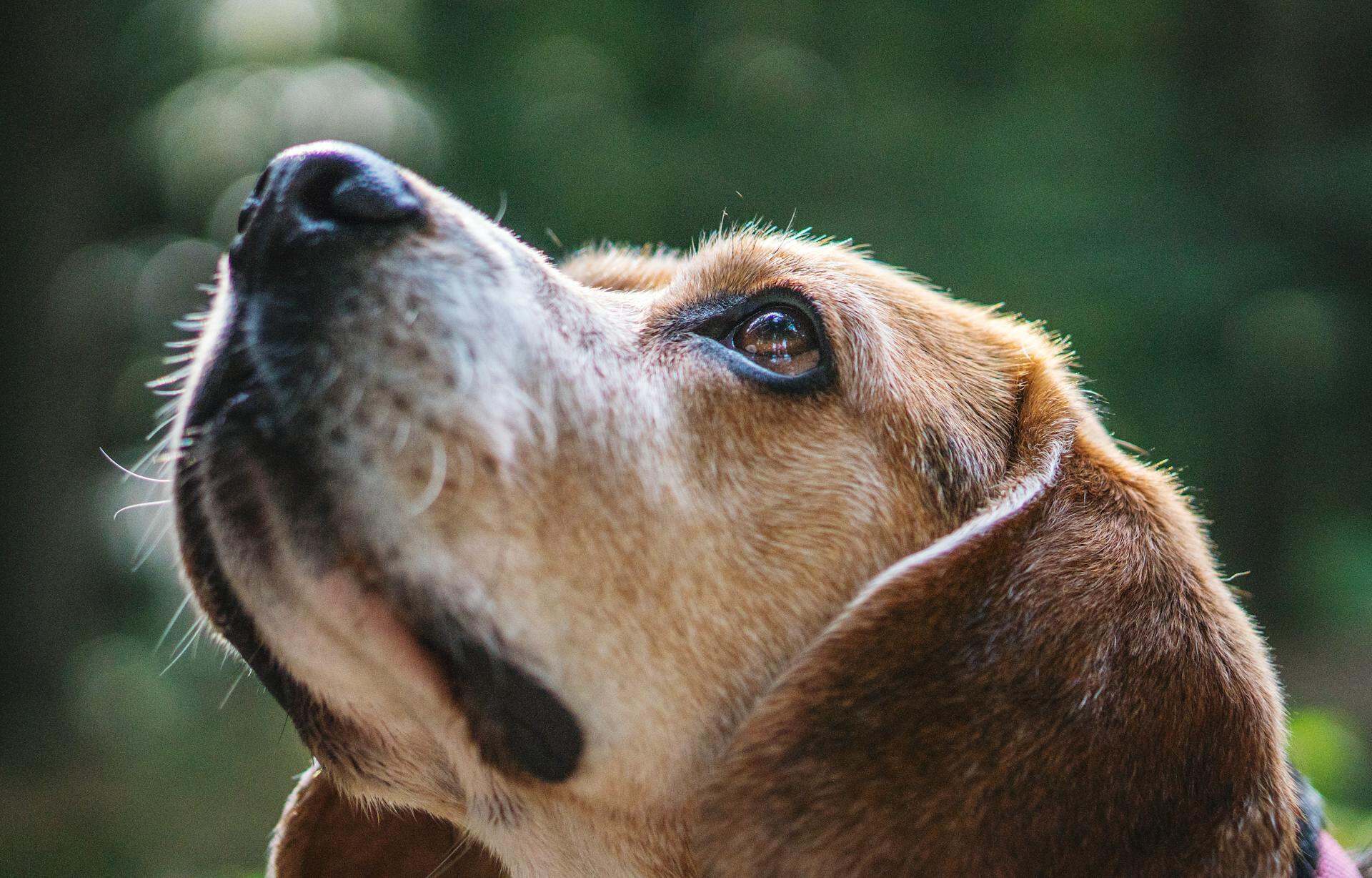
When should I head to a vet?
First things first, let’s clarify that some amount of tearing, watering, or even eye boogers are 100% normal. But it may be a cause for concern if you notice it’s:
- Excessive
- Persisting over at least a few days
And importantly, accompanied by symptoms like:
- Redness
- Swelling
- Excessive rubbing or pawing at the face
- Yellow, green, or white-grey discharge
In these cases, drop by your vet for a checkup immediately.
And how can I prevent eye discharge in dogs?
Like with most things concerning your dog’s health and well-being, safety starts with you – and there’s a lot you can do to prevent your dog from picking up something infectious in the first place.
So make sure you:
- Don’t skip the vet visits. These can help you catch on to a health issue early before it worsens – helping you avoid having to pay a more expensive bill in the long run.
- Keep your environment and surroundings free of pollutants and allergens, including pollen, dander, dust, and smoke. All of these can irritate your dog’s eyes and cause redness and tearing.
- Be extra mindful of your dog’s meals. Food allergies might cause some eye discharge and other symptoms of illness as well.
- Clean and groom the fur around your dog’s eyes more often. Make sure to use a vet-approved eye care product and a clean, damp cloth.
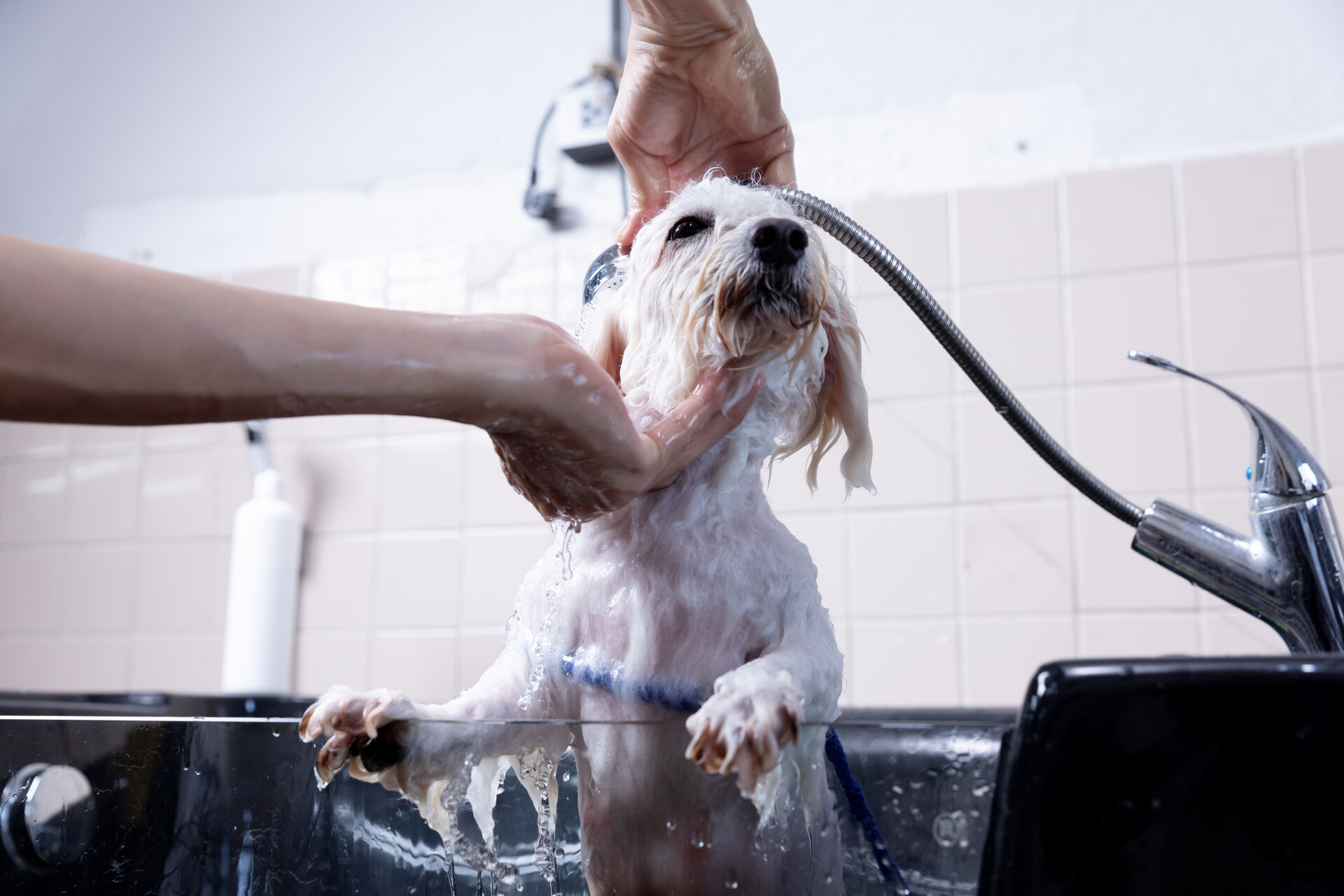
And most importantly…
- Make sure your dog isn’t picking up something infectious from outdoors. (Whether in your company or by themselves.)
Which, if you’ve invested in a Tractive device, means you’ve now got your dog’s safety at your fingertips – just a glance at your phone away.
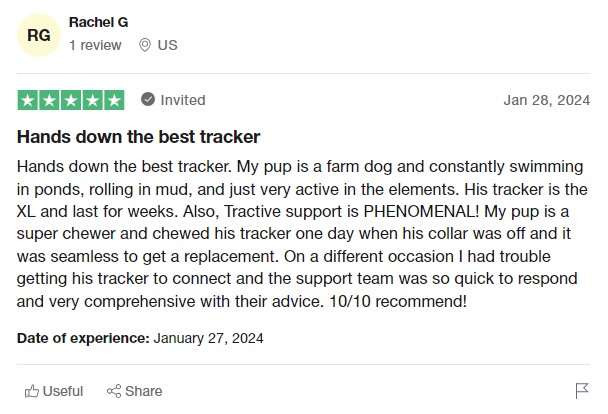
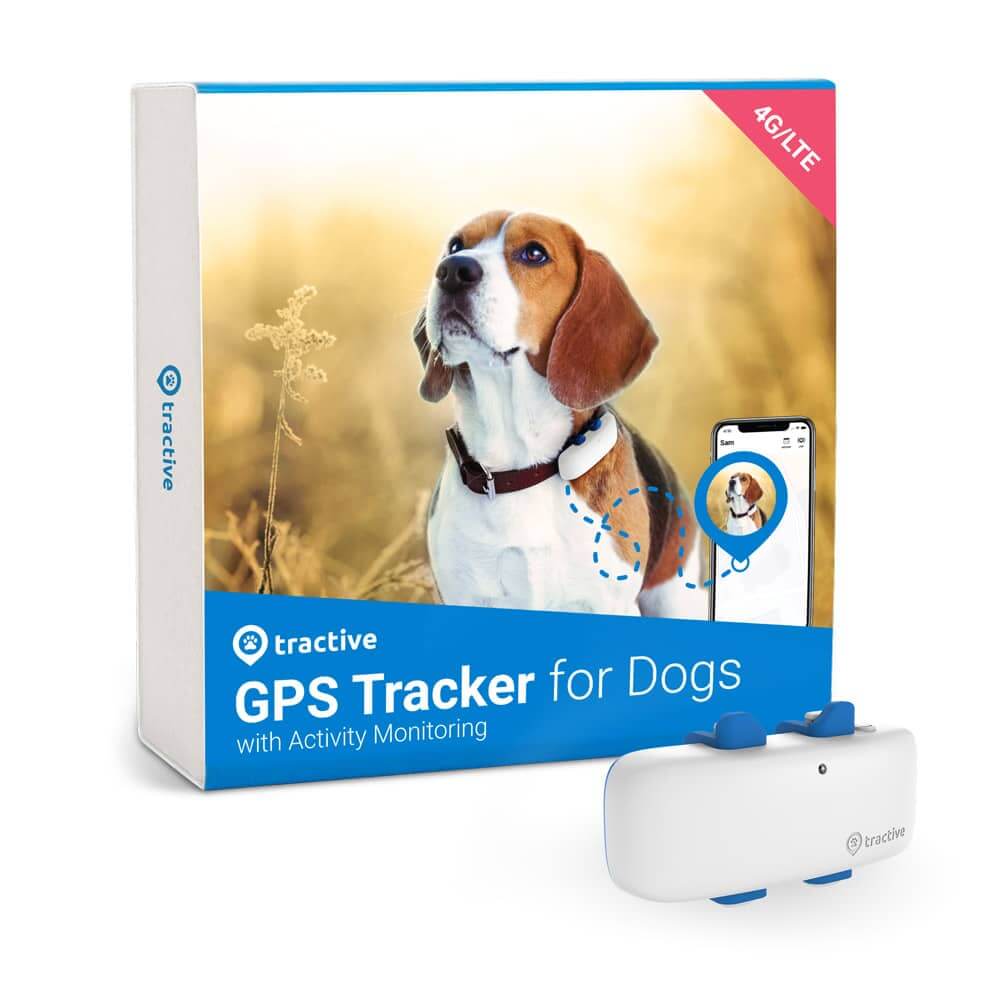
Always know where your dog is
Follow every step in real-time with unlimited range. Get alerts if they wander too far. Keep them happy & healthy with Wellness Monitoring. And let others – like walkers or sitters – keep an eye on your dog too.
Want to see a vet managing dog eye discharge in action? Here’s Dr. Lera from the Heron Lakes Animal Hospital walking you through it:
And if you’ve liked this post, share it with a friend or a loved one – and let’s help build a safer, kinder world for our furry friends together.
Your furry friend’s health and wellbeing means as much as to us as it does to you. So we’ve made it a priority to only share medically-relevant content on our blog.
This post was checked, double-checked, and medically verified by Georgia-based vet, Dr. Dwight Alleyne.
Dr. Dwight Alleyne, DVM
Dwight Alleyne was born and raised in Long Island, New York where his love of animals began. His career for animals began working for a well-known no-kill animal shelter on Long Island.
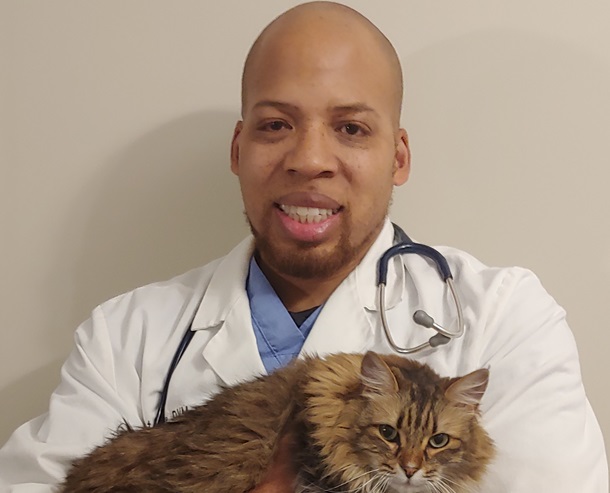
He worked his way up the career ladder working as a kennel technician, veterinary assistant, and then becoming a licensed veterinary technician at the shelter.
His passion for veterinary medicine led to him applying to and being accepted at Cornell University Veterinary where he graduated from in 2006. After completing a small animal rotating internship at Purdue University, he eventually made his way to Georgia where he has been practicing ever since.
Dr. Alleyne has practiced at several small animal clinics throughout Georgia. He has a keen interest in soft tissue surgery and has extensive experience in performing ultrasounds including echocardiograms.
When he is not practicing medicine, Dr. Alleyne enjoys writing and editing pet health articles and providing pet advice through telehealth.
Dr. Alleyne also has his own blog called “The Animal Doctor Blog.” Check it out on: www.anmldrblog.com.




